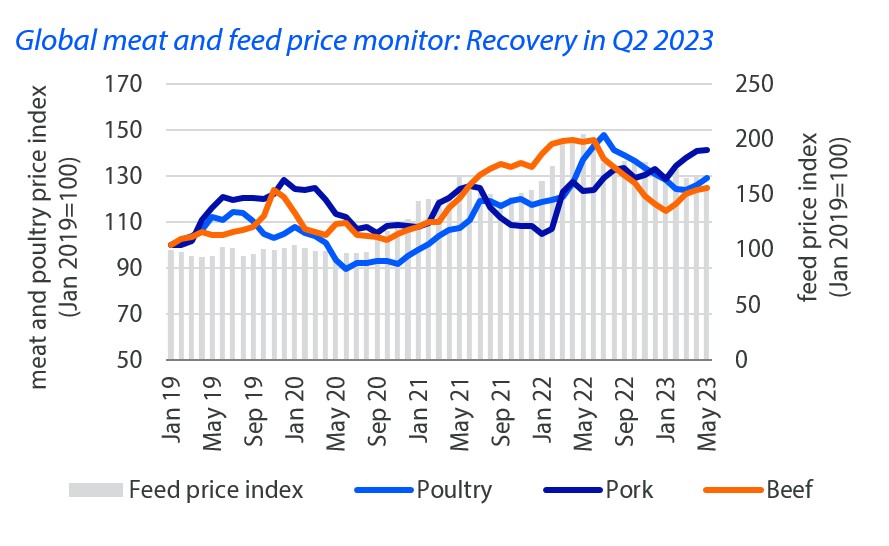Poultry industry outlook: positive prospects amid avian influenza uncertainty
 The global poultry industry is poised for a strong second half of the year, driven by lower feed prices and enhanced value chains, according to the latest report by Rabobank. However, an escalating number of high pathogenicity avian influenza (HPAI) cases in Brazil presents a wildcard that has put the industry on high alert. Any potential outbreak in commercial flocks within the southern states of Brazil could have significant ramifications, including trade restrictions and disrupted global trade flows and prices.
The global poultry industry is poised for a strong second half of the year, driven by lower feed prices and enhanced value chains, according to the latest report by Rabobank. However, an escalating number of high pathogenicity avian influenza (HPAI) cases in Brazil presents a wildcard that has put the industry on high alert. Any potential outbreak in commercial flocks within the southern states of Brazil could have significant ramifications, including trade restrictions and disrupted global trade flows and prices.
Lower production costs with dropping feed prices
The poultry industry is experiencing relief from high production costs as cheaper grains and oilseeds permeate poultry value chains. This cost reduction not only alleviates industry pressure but also makes poultry more accessible to price-focused consumers during a period of economic weakness. "Global feed prices are expected to continue declining, with projected costs for 2023 estimated to be 10% to 15% lower than the historic highs of 2022," shared Nan-Dirk Mulder, Senior Analyst – Animal Protein at Rabobank.

Global supply dynamics’ key role in maintaining poultry market balance
While input costs decrease, supply remains relatively tight in several regions worldwide, including Europe, Mexico, Russia, the Philippines, and Malaysia. Conversely, other regions such as the US, Japan, and Thailand are witnessing an improvement in supply balance. With the prices of competing proteins like pork, eggs, and beef anticipated to remain high, poultry is expected to receive some price support. Therefore, achieving a balanced supply in the market is critical for sustained success.
Global trade remains bullish, but China and Brazil HPAI outbreaks are wildcards
Global trade continued its growth trajectory of the past year, reaching another record of 3.5m metric tons in Q1 2023. Brazil has emerged as a frontrunner in global trade, with a notable 17% increase in poultry exports during the first quarter of 2023, while US exports grew only slightly. Conversely, Turkey, Argentina, and Chile have struggled due to trade restrictions imposed as a result of HPAI cases. To prepare for the potential impact of an HPAI outbreak in Brazil, some importers have taken precautionary measures by building up their inventory. "We anticipate trade to maintain its strength in the latter half of the year, as major import markets like Europe, Japan, North Africa, the Middle East, South Africa, and the Philippines are projected to increase imports due to limited domestic supply and strong/improving prices," remarked Mulder. However, weaker conditions in China may lead to increased price competition and reduced import demand.
Avian influenza remains a persistent threat to global trade and prices
The global spread of HPAI has continued throughout the year, exerting pressure across all continents. The outlook for the upcoming Southern Hemisphere winter months suggests sustained pressure, particularly in eastern Latin America, northeast Asia, and southern Africa. "Brazil, especially its poultry-producing southern states, remains at high risk should an HPAI outbreak occur in commercial flocks," cautioned Mulder. Such outbreaks could have a major impact on global trade, with whole chicken and breast meat prices likely to be particularly affected. Some importing countries, especially in Far East Asia and the Middle East, could face very tight supply situations, while other import markets in Europe and Latin America could also be significantly affected. As the year progresses, the threat is anticipated to shift to the Northern Hemisphere, placing Europe, North America, and northeast Asia at renewed risk. The severity of the pressure in these regions remains uncertain. www.rabobank.com



